#Sengokuperiod
Explore tagged Tumblr posts
Photo

Daily life in medieval Japan (1185-1606 CE) was, for most people, the age-old struggle to put food on the table, build a family, stay healthy, and try to enjoy the finer things in life whenever possible. The upper classes had better and more colourful clothes, used expensive foreign porcelain, were entertained by Noh theatre and could afford to travel to other parts of Japan while the lower classes had to make do with plain cotton, ate rice and fish, and were mostly preoccupied with surviving the occasional famine, outbreaks of disease, and the civil wars that blighted the country. Still, many of the cultural pursuits of medieval Japan continue to thrive today, from drinking green tea to playing the go board game, from owning a fine pair of chopsticks to remembering ancestors every July/August in the Obon festival.
#HistoryFacts#History#Sumo#Shogun#SengokuPeriod#Samurai#NohTheatre#MuromachiPeriod#MedievalJapan#KamakuraPeriod#Kamakura#WHE
31 notes
·
View notes
Text
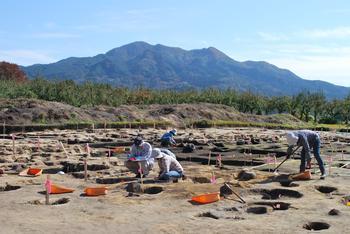
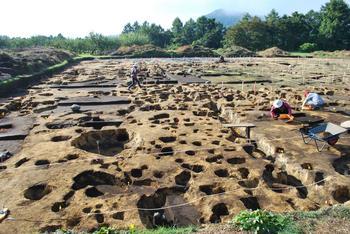
El clan Nanbu tenía un fuerte. ¿Qué es un daimyō? La gama que los samuráis ganaron más poder son los señores feudales, el sitio histórico de shojujitate fue la residencia del clan Nanbu, construido en la orilla norte del río mabuchi en la prefectura de Aomori. Estaban ubicados en el punto estratégico de comunicación. - Sin embargo, el castillo estaba cerca de los caminos oshu kaido y kazunokaido, el lugar estaba limitado por montañas al este-oeste y norte-sur, los 300 a 250 m la dimensión del fuerte era de aproximadamente 90.000 metros cuadrados. Como resultado de la excavación que el arqueólogo llevó a cabo hasta el edificio de pilares del escape más grande de la región de tohoku, se extiende 18 tramos de 36 m de norte a sur de 42 m, la estructura ha sido de dos pisos de altura y los pilares de la puerta de 45 cm la fecha del castillo de 1539 en la era de Teherán. - Cerámica de alta calidad y artefactos culturales honshu Ainu, se han recuperado más de 4000 tipos de cerámica vidriada medieval dentro del sitio, de los cuales siete décimos son guerras vidriadas chinas. - En resumen, la forma en que se puede discernir a partir de los elementos recuperados en los restos de shojujitate datan de la cultura del período Murumachi y Sengoku en Japón. - - En resumen, la forma en que se puede discernir a partir de los elementos recuperados en los restos de shojujitate datan de la cultura del período Murumachi y Sengoku en Japón. - 南部氏には砦がありました。大名とは?武士が勢力を拡大した範囲は領主領であり、青森県の馬渕川北岸に建てられた南部藩の居城であった正寿寺立史跡は交通の要所に位置していました。 しかし、城は奥州街道や鹿角街道に近く、東西南北は山に囲まれた場所でした。 300 から 250 m の砦の寸法は約 90,000 平方メートルでした。 18スパン36m南北42mに及ぶ東北地方最大級の脱獄の柱建造物を考古学者が発掘調査した結果、2階建てで門柱45cmの城郭時代の1539年テヘラン時代。 高品質の陶磁器と本州アイヌの文化的遺物、4000 種類以上の中世の釉薬を使った陶磁器が遺跡内から回収されており、そのうち 10 分の 7 が中国の釉薬を使った陶器です。 手短に言えば、正寿寺立遺跡の出土品から、室町時代と戦国時代の文化が日本に伝わる様子がわかる。 - The Nanbu clan had a fort. What is a daimyo? The range that the samurais won more power are the sir feudal, the shojujitate historic site was the residence of the Nanbu clan, built in the north bank of the mabuchi river in the Aomori prefecture were located in the strategic point of communication. However the castle was near the oshu kaido and Kazunokaido roads, the place was limited by mountains to the east-west and north - south; the 300 to 250 m the dimension of the fort was approximately 90.000 square meters. As a result of excavation the archaeologist conducted to the pillar building of the largest escape of the tohoku region extending 18 spans 36 m north-south spans 42 m, the structure has been two stories tall and gate pillars 45 cm the castle date of 1539 in the Tehran era. High quality ceramics and honshu Ainu cultural artifacts, more than 4000 types of medieval glazed ceramics have been recovered from within the site of which seven tenth are Chinese glazed warres. In short the manner it can be discerned from the items recovered at the shojujitate remains date Murumachi and Sengoku period culture to Japan. ソース写真/source photo: https://www.town.aomori-nanbu.lg.jp/page/1543.html
#正十次立史跡#南部町#青森県#アイヌ文化#アイヌ#日本#日本の歴史#日本の考古学#考古学的遺跡#世界遺産#向かい合う鶴のモチーフ#戦国時代#大名#馬淵川#鹿角街道#ShojujiritsuHistoricSite#NanbuTown#AomoriPrefecture#AinuCulture#Ainu#Japan#JapaneseHistory#JapaneseArcheology#ArchaeologicalRuins#WorldHeritage#FacingCraneMotif#SengokuPeriod#Daimyo#Mabechigawa#Kazunohighway
63 notes
·
View notes
Text



I just recently turned a #webkinz #goldenretriever #plush that I found #thrifted into a #sengokuperiod inspired Golden Retriever child. I wanted to see if I can use the #punchneedle technique with fabric that is used to make stuffed animals. It works, but unfortunately it is difficult to do, that's how the elephant turned out. Unfortunately it was a failed attempt, but at least that I got the #elephant plush for free at the @whatsinstoreterrace in the Free bin. it had unwashable stains on it anyway, so I was glad that i used that plush as a practice before doing it to the golden retriever. his hair was made from brushed out acrylic yarn that I #felted on to, and his chest. #handmade #stuffedanimalrestoration #stuffedanimals #recycledart #トニートニー・チョッパー #アニメ #かわいい #failedattempts #thriftedart
#modern art#かわいい#フェルト#feltingwork#felted#anime#manga#handmade#oc art#golden retriever#webkinz#stuffed animals
1 note
·
View note
Photo
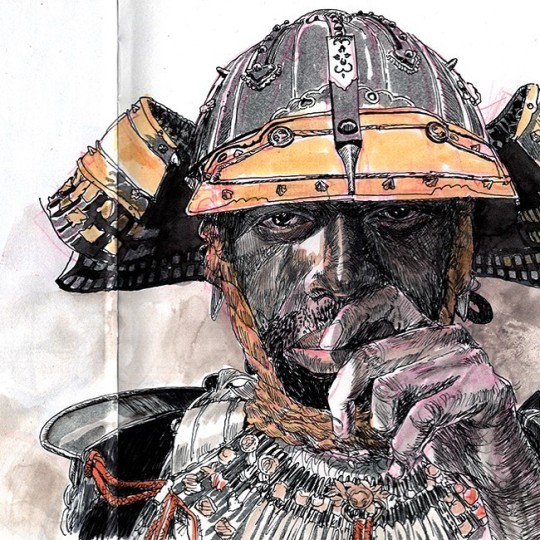
Yasuke. Microns, markers and watercolors #art #illustration #sketchbook #Sktchy #portraiture #brushpen #instamood #samurai #侍 #sengokuperiod #penandink #vinganapathy https://www.instagram.com/p/CLqUpR2nOGp/?igshid=1iu835q9wa78y
#art#illustration#sketchbook#sktchy#portraiture#brushpen#instamood#samurai#侍#sengokuperiod#penandink#vinganapathy
36 notes
·
View notes
Photo
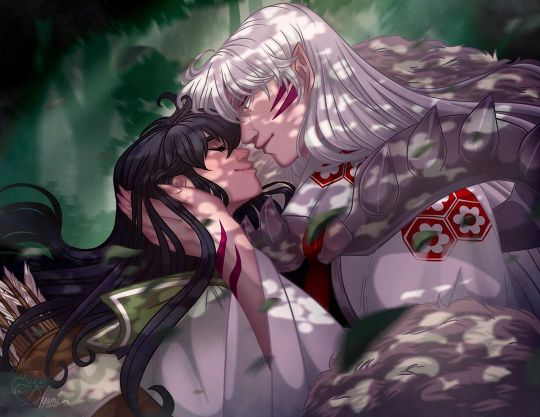
🍱KAGOME & SESSHOMARU PRINT🌙 [Late night post!] OMGOSH you guys, I couldn’t wait to show you them once I finished so here they are! 😆 I hope you like them! Like my other pin set this A2 sized print will be included in EVERY Preorder of the Limited Edition Kagome & Sesshomaru Enamel Pin Set as a Thank You! 🤗 Remember the LIMITED EDITION Inuyasha Pin Set featuring Kagome and Sesshomaru will be available on April 18th @ 9AM PST in my Etsy store! Preorders will be open for 5 days ONLY or until all 30 slots have been taken - the FIRST 30 Preorders will receive the pin set at the DISCOUNTED price of $55! They will be sold as a PAIR! The set includes dangling gem stones and a small Sakura blossom! After the limited time the set will be priced at $65. So don’t miss out on this ONE TIME ONLY deal as this specific version of these pins will no longer be available once gone!” *There will also be a surprise detail on the back of each pin! . . . #fanart #otp #inuyasha #anime #dogdemon #inu #enamelpins #inuyashaenamelpin #inuyashamerchandise #lapelpins #otppins #preorder #preorderenamelpin #inuyashafanart #kagomexsesshomaru #sesshomaruxkagome #kagomehigurashi #sengokuperiod #sesshomaru #sesshomarutaisho #sesskag #feudalera #inuyashaforest #inuyashaafeudalfairytale #afuedalfairytale #moon #shikonjewel #shikonjewelshards https://www.instagram.com/p/B-gmIWcF4n4/?igshid=19fbercz1d353
#fanart#otp#inuyasha#anime#dogdemon#inu#enamelpins#inuyashaenamelpin#inuyashamerchandise#lapelpins#otppins#preorder#preorderenamelpin#inuyashafanart#kagomexsesshomaru#sesshomaruxkagome#kagomehigurashi#sengokuperiod#sesshomaru#sesshomarutaisho#sesskag#feudalera#inuyashaforest#inuyashaafeudalfairytale#afuedalfairytale#moon#shikonjewel#shikonjewelshards
520 notes
·
View notes
Photo
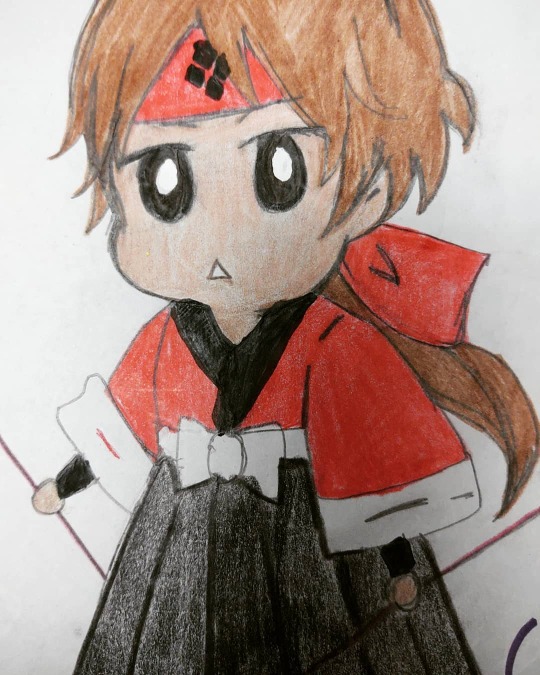
Sengoku Basara: Sanada Yukimura #sanadayukimura #sengokuperiod #sengokubasara #videogames #playstation #character #chibi #sanada #yukimura https://www.instagram.com/p/CMEDoz7FFFh/?igshid=jvdior6loq7d
1 note
·
View note
Photo
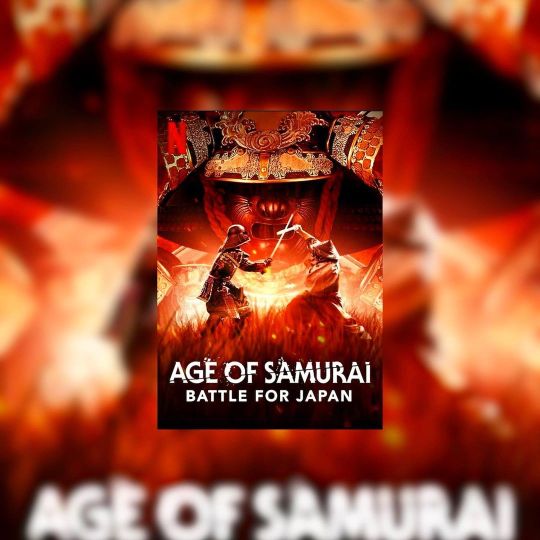
・ ・ イカゲームを観終えようと思ったけど『エイジ・オブ・サムライ: 天下統一への戦い』を観終わった。 ・ まあまあ端折りがパないけども分かりやすい三英傑。 生ぬるい大河の様な表現ではないbloody感が非常に良い! 要約とはこういうモノだとつくづく感心する。 現代日本は江戸時代の延長線上にあると言うが安���桃山の時代からの記憶が今に至っているのだ!と自論に自己満足w ・ #エイジオブサムライ #天下統一への戦い #AgeofSamurai #BattleforJapan ・ #天下統一 #unificationofthewholecountry ・ #織田信長 #OdaNobunaga #豊臣秀吉 #ToyotomiHideyoshi #徳川家康 #TokugawaIeyasu ・ #16世紀 #16thcentury #戦国時代 #Sengokuperiod #日本 #Nippon ・ #ドキュメンタリー #documentary #ネットフリックス #Netflix ・ #映画 #movie #ビバムビ #instamovie #moviestagram #instagood #instapic (Tokyo Japan) https://www.instagram.com/p/CWndynOl62p/?utm_medium=tumblr
#エイジオブサムライ#天下統一への戦い#ageofsamurai#battleforjapan#天下統一#unificationofthewholecountry#織田信長#odanobunaga#豊臣秀吉#toyotomihideyoshi#徳川家康#tokugawaieyasu#16世紀#16thcentury#戦国時代#sengokuperiod#日本#nippon#ドキュメンタリー#documentary#ネットフリックス#netflix#映画#movie#ビバムビ#instamovie#moviestagram#instagood#instapic
0 notes
Photo
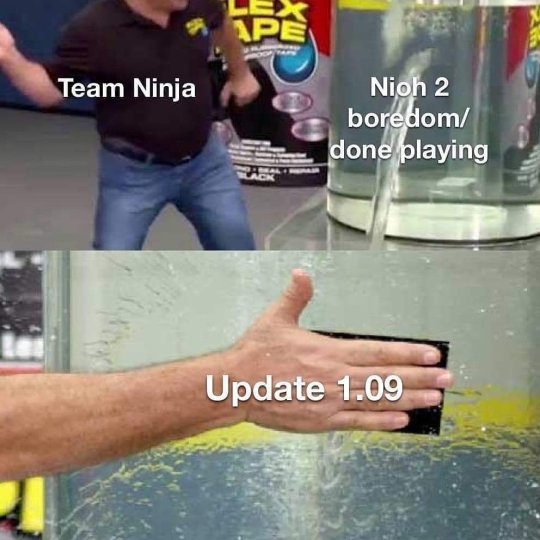
Ha! #nioh2 #blacksamurai #dlc #photomode #sengokuperiod (at Las Vegas, Nevada) https://www.instagram.com/p/CAQ3d9unY2CJ7f1J6m8gQ9kMSneNiRLTuA2Cho0/?igshid=4yhuuy1z1bvq
0 notes
Photo

I always knew they were #BlackSamurai that existed. #Yasuke #AfricanSamurai #OdaNobunaga #Daimyo #SengokuPeriod I pray that #ChadwickBoseman does this man justice. https://www.instagram.com/p/B2eVWSrj2Qr/?igshid=vca9coig3yks
0 notes
Photo
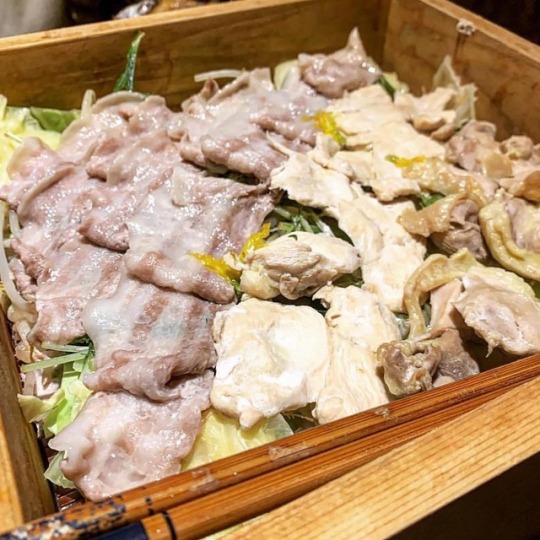
#戦国武勇伝新宿 #伊達鶏と黄金豚せいろ 甘くて柔らかなお肉たち💕 ボリュームもたっぷりで美味しかった😋 #dinner #新宿 #新宿グルメ #戦国武勇伝 #居酒屋 #新宿三丁目 #食べ歩き #呑み歩き #instagood #instalife #instajapn #伊達鶏 #黄金豚 #せいろ蒸し #せいろ #sengokuperiod #samurai #thewarringstatesperiod #ageofc #tavern #Japanesetavern (戦国武勇伝) https://www.instagram.com/p/BwUZ592FIs2/?utm_source=ig_tumblr_share&igshid=6cw3r1vqj2yt
#戦国武勇伝新宿#伊達鶏と黄金豚せいろ#dinner#新宿#新宿グルメ#戦国武勇伝#居酒屋#新宿三丁目#食べ歩き#呑み歩き#instagood#instalife#instajapn#伊達鶏#黄金豚#せいろ蒸し#せいろ#sengokuperiod#samurai#thewarringstatesperiod#ageofc#tavern#japanesetavern
0 notes
Photo
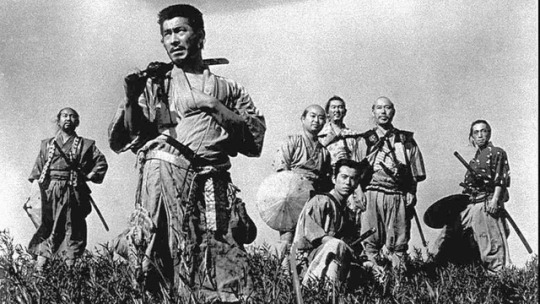
Seven Samurai 1954 -Akira Kurosawa #film #filmphotography #movies #japan #japanese #samurai #sword #sengokuperiod
0 notes
Photo

Shogun
The shoguns of medieval Japan were military dictators who ruled the country via a feudal system where a vassal's military service and loyalty was given in return for a lord's patronage. Established as an institution by the first shogun proper, Minamoto no Yoritomo in 1192 CE, the shoguns would rule for seven centuries until the Meiji Restoration of 1868 CE. The position of shogun was held by members of certain families which gave their names to two of the three successive shogunate governments (bakufu): the Ashikaga Shogunate (r. 1338-1573 CE) and Tokugawa Shogunate (r. 1603-1868 CE). In the case of the first shogunate, the capital gave its name to the government: the Kamakura Shogunate (r. 1192-1333 CE). The other shogunates may also be referred to by their capitals: Muromachi (Ashikaga Shogunate), an area of Heiankyo/Kyoto, and Edo (Tokugawa Shogunate), the original name of Tokyo.
Continue reading...
72 notes
·
View notes
Text
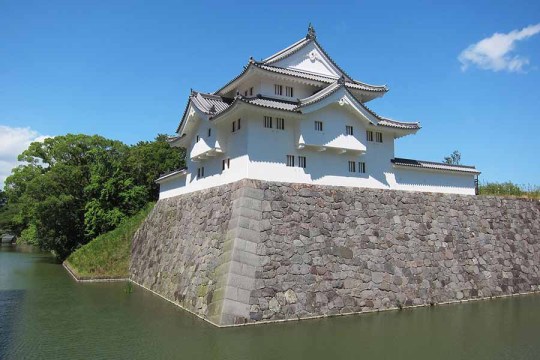

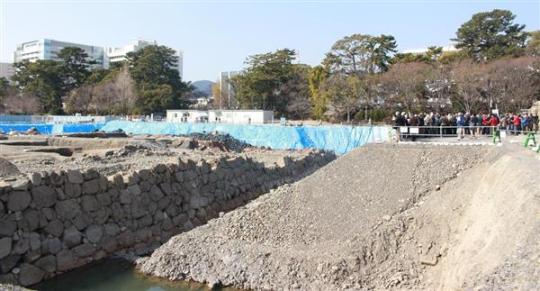
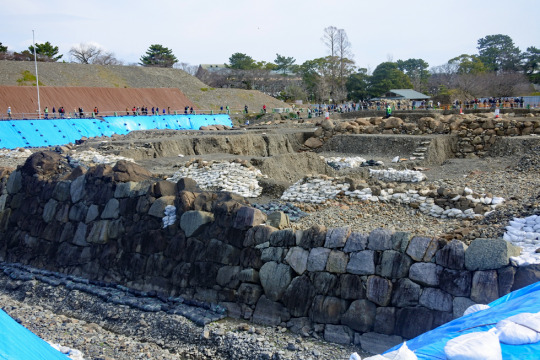
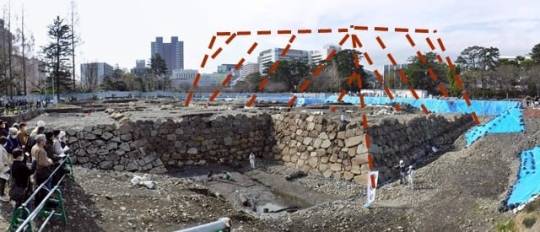
Sean bienvenidos japonistasarqueológicos, a una nueva entrega de arqueología nipona en esta ocasión os hablaré del castillo de Sunpu que se encuentra en la ciudad de Shizuoka, en la Prefectura de Shizuoka. - El castillo de Sunpu, fue en el lugar en donde vivó, Ieyasu Tokugawa en los siglos XVI-XVII, donde pasó sus últimos años de vida, las ruinas de las torres del castillo que se construyeron con diferentes métodos de construcción durante el período Sengoku y el período Edo. - Sunpu Castle Park es uno de los lugares turísticos representativos de la ciudad de Shizuoka es un parque que utiliza las ruinas del castillo, macizo de flores Aoi lleva el logo de la familia de Tokugawa como proyecto conmemorativo del 400 aniversario de Ieyasu Tokugawa. El área está bajo excavación, se encuentra en la zona noroeste y se está realizando actualmente la excavación de la torre del castillo. - Hay una parte del castillo que está muy reconstruida y que se puede visitar con un módico precio, dado que el segundo piso y los superiores no se pueden abrir al público debido a la ley de construcción, el piso se quita para que la estructura se pueda ver desde abajo. - La Puerta Este/Tatsumi Yagura, está rodeada por un foso y está cerca de la estación Shin-Shizuoka. La torreta Tatsumi Higashigomon y Tatsumi Yagura están conectadas,el Tatsumi Yagura fue restaurado en 1989 y la puerta este se restauró en 1996. La entrada al jardín Momijiyama está cerca de la puerta norte del parque del castillo de Sumpu. Hay un gran estanque en el centro, y está dividido en 9 áreas que se asemejan al paisaje de Shizuoka con flores de temporada. Hay una estatua de Yaji-san y Kita-san fue construida para conmemorar el 200 aniversario. - En 1585, Tokugawa Ieyasu comenzó la construcción del castillo y en 1588 se completó la torre del castillo Sunpu.Incluso después de que Ieyasu empezará el shogunato de Edo en 1603 y se mudó a Edo, la familia Tokugawa continuó preparándolo.Se dice que es el lugar donde Ieyasu regresó al castillo de Sumpu en 1607, se retiró y murió en 1616 a la edad de 75 años. - Espero que os haya gustado y nos vemos en próximas publicaciones, pasen una buena semana.
Welcome, Japanese archaeologists, to a new instalment of Japanese archaeology. This time I will be talking about Sunpu Castle, located in the city of Shizuoka, Shizuoka Prefecture. - Sunpu Castle was the place where Ieyasu Tokugawa lived in the 16th-17th centuries, where he spent the last years of his life. The ruins of the castle towers were built with different construction methods during the Sengoku and Edo periods. - Sunpu Castle Park is one of the representative tourist sites of Shizuoka City is a park that uses the ruins of the castle, Aoi flowerbed bears the logo of the Tokugawa family as a project commemorating the 400th anniversary of Ieyasu Tokugawa. The area is under excavation, it is located in the northwest area and the excavation of the castle tower is currently underway. - There is a part of the castle that is heavily reconstructed and can be visited for a small fee, as the first floor and above cannot be opened to the public due to construction law, the floor is removed so that the structure can be seen from below. - The East Gate/Tatsumi Yagura, is surrounded by a moat and is close to Shin-Shizuoka Station. The Tatsumi Higashigomon turret and Tatsumi Yagura are connected, the Tatsumi Yagura was restored in 1989 and the east gate was restored in 1996. The entrance to Momijiyama Garden is near the north gate of Sumpu Castle Park. There is a large pond in the centre, and it is divided into 9 areas that resemble the Shizuoka landscape with seasonal flowers. There is a statue of Yaji-san and Kita-san was built to commemorate the 200th anniversary. - In 1585, Tokugawa Ieyasu started the construction of the castle and in 1588 the Sunpu castle tower was completed. Even after Ieyasu started the Edo shogunate in 1603 and moved to Edo, the Tokugawa family continued to prepare it. It is said to be the place where Ieyasu returned to Sumpu castle in 1607, retired and died in 1616 at the age of 75. - I hope you liked it and see you in future posts, have a nice week.
日本の考古学者の皆さん、新しい日本考古学へようこそ。今回は、静岡県静岡市にある駿府城についてお話します。 - 駿府城は、16 世紀から 17 世紀にかけて徳川家康が晩年を過ごした場所です。天守閣跡は、戦国時代から江戸時代にかけてさまざまな工法で築かれました。
-
静岡市を代表する観光地の一つである駿府城公園は、徳川家康公400年記念事業として城跡を利用した公園で、葵花壇には徳川家のマークが刻まれています。発掘調査中のエリアで、北西部に位置し、現在天守閣の発掘調査が行われています。
-
城の一部は大規模に復元されており、1階以上は建築法の関係で一般公開できないため、床を撤去して下から構造を見学できるようになっており、低料金で見学できる。 。
-
新静岡駅からもほど近い、お堀に囲まれた東門・巽櫓。巽東御門櫓と巽櫓はつながっており、巽櫓は1989年、東門は1996年に復元されました。紅葉山庭園の入り口は駿府城公園の北門近くにあります。中央に大きな池があり、季���の花々が彩る静岡の風景をイメージした9つのエリアに分かれています。弥次さんと喜多さんの像があり、200年を記念して建てられました。
-
1585年に徳川家康が築城を開始し、1588年に駿府城天守閣が完成しました。 1603年に家康が江戸幕府を開き、江戸に移った後も、徳川家では仕込み続けられました。 1607年に家康が駿府城に戻り、隠居し、1616年に75歳で亡くなった場所といわれています。
-
気に入っていただければ幸いです。今後の投稿でお会いしましょう。良い一週間をお過ごしください。
#日本#歴史#ユネスコ#城#考古学#遺跡#徳川家康#戦国時代#駿府城#静岡市#葵の花#辰野櫓#紅葉山庭園#大名#静岡県#地理#人類遺産#japan#history#unesco#castle#archaeology#archaeologicalrests#TokugawaIeyasu#Sengokuperiod#SunpuCastle#ShizuokaCity#AoiFlowers#TatsuYagura#MomijiyamaGarden
29 notes
·
View notes
Photo

🍱KAGOME & SESSHOMARU REVEAL🌙 [Coming soon!] This pair has ALWAYS been my second favorite het couple of ALL time! 💖 Even though they are not canon in the Inuyasha series. 😞 Do you agree with this couple? If so, let me know with a comment below. 🤗 This LIMITED EDITION Inuyasha Pin Set featuring Kagome and Sesshomaru will be available on April 18th @ 9AM PST in my Etsy store! Preorders will be open for 5 days ONLY or until all 30 slots have been taken - the FIRST 30 Preorders will receive this beautiful pin set at the DISCOUNTED price of $55! They will be sold as a PAIR! This set includes dangling gem stones and a small Sakura blossom! After the limited time this set will be priced at $65. So don’t miss out on this ONE TIME ONLY deal as this specific version of these pins will no longer be available once gone!” Pin Details: Kagome * 2.50 inches wide * Gold Plated * 12 Hard Enamel Colors - 1 with glitter * Lips Screen Printing * 4 Green Gem Stones * 2 Post backings * Raised Imprint of my Logo on the back
Sesshomaru * 2.50 inches wide * Gold Plated * 13 Hard Enamel Colors - 1 with glitter * Eyes Screen Printing * 4 Red Gem Stones * 2 Post backings * Raised Imprint of my Logo on the back
Sakura Blossom * 0.75 inches wide * Gold Plated * 1 Hard Enamel Color * NO Post backings * Raised Imprint of my Logo on the back . . . #fanart #otp #inuyasha #anime #dogdemon #inu #enamelpins #inuyashaenamelpin #inuyashamerchandise #lapelpins #otppins #preorder #preorderenamelpin #inuyashafanart #kagomexsesshomaru #sesshomaruxkagome #kagomehigurashi #sengokuperiod #sesshomaru #sesshomarutaisho #sesskag #feudalera #inuyashaforest #inuyashaafeudalfairytale #afuedalfairytale #moon #shikonjewel #shikonjewelshards https://www.instagram.com/p/B-ZzHkNFep0/?igshid=zy2yt0q3eopq
#fanart#otp#inuyasha#anime#dogdemon#inu#enamelpins#inuyashaenamelpin#inuyashamerchandise#lapelpins#otppins#preorder#preorderenamelpin#inuyashafanart#kagomexsesshomaru#sesshomaruxkagome#kagomehigurashi#sengokuperiod#sesshomaru#sesshomarutaisho#sesskag#feudalera#inuyashaforest#inuyashaafeudalfairytale#afuedalfairytale#moon#shikonjewel#shikonjewelshards
100 notes
·
View notes
Photo
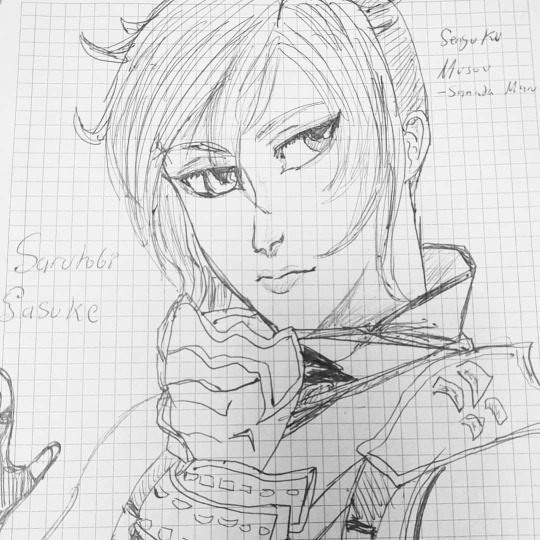
Sengoku Musou/Samurai Warriors: Sarutobi Sasuke #sengokuperiod #sengokumusou #samuraiwarriors #sarutobi #sasuke #koei #koeitecmo #playstation https://www.instagram.com/p/CMI0-eZlYnF/?igshid=nh4f4lx35gvz
0 notes
Photo

The Muromachi Period (Muromachi Jidai, 1333-1573 CE) refers to the period of Japanese medieval history when the Ashikaga shogun capital was located in the Muromachi area of Heiankyo (Kyoto). Replacing the Kamakura Shogunate (1192-1333 CE), the Ashikaga or Muromachi Shogunate (1338-1573) would oversee a depressingly warlike, rebellious, and brutal period of history which saw incessant rivalries between warlords and unchecked bandits plaguing the countryside. There were a few bright spots such as the construction of the Kinkakuji and Ginkakuji temples in Kyoto as well as progress in trade and commerce, the arts and castle architecture. The period ended with the warlord Oda Nobunaga seizing power in 1568 CE and his decision to exile the last Ashikaga shogun in 1573 CE.
48 notes
·
View notes